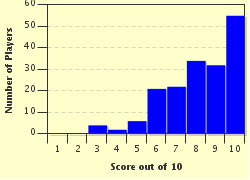Quiz Answer Key and Fun Facts
1. When you look up at the night sky on a clear night, you can sometimes see what looks like a cloudy streak across the sky. What is this called?
2. The arrow in this picture is pointing to Betelgeuse, a large red star that forms the shoulder of a constellation thought to represent an ancient Greek hunter. What is its name?
3. Here is another shape in the night sky that people in the northern hemisphere find easy to recognise. Most North Americans simply call it the Big Dipper, but it is actually part of a larger constellation which the ancient observers fancied resembled a large bear. Which of these is it?
4. The two stars in the Big Dipper that form the side furthest from its handle are often called the pointers, because a line drawn through them will help you locate the star at the end of the handle of this shape, the Little Dipper. What is special about this star?
5. The three brightest stars in this image are called Altair, Deneb and Vega. What name is given for the pattern they seem to form in the sky?
6. For a change, here is a constellation that is most associated with the southern hemisphere. What is the name of the smallest of the 88 constellations which are currently recognised?
7. This map of the stars has had the shape of the constellation Cygnus drawn in. Without that line, you might find it hard to recognise that Cygnus is which of these types of animal?
8. The fifth largest of the currently recognised constellations is named after a famous Greek mythological figure who completed twelve tasks to atone for having killed his wife and children in a fit of madness. The constellation uses the Roman form of his name. Which of these is it?
9. Although he appears to be standing on his head, this map shows the constellation named after the flying horse whose mother was the gorgon Medusa, and whose father was Poseidon. What is it called?
10. The W shape of Casseopeia in the sky is easier to locate than it is to interpret as what it represents. Which of these is that?
Source: Author
looney_tunes
This quiz was reviewed by FunTrivia editor
NatalieW before going online.
Any errors found in FunTrivia content are routinely corrected through our feedback system.

